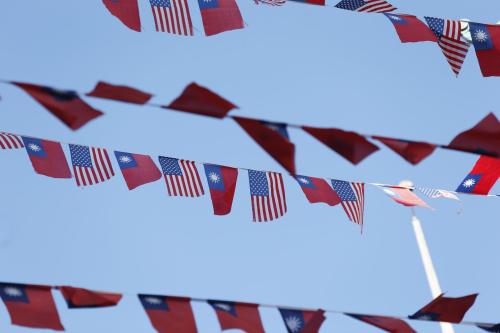Content from the Brookings Institution India Center is now archived. After seven years of an impactful partnership, as of September 11, 2020, Brookings India is now the Centre for Social and Economic Progress, an independent public policy institution based in India.
In this India-U.S. Policy Memo, Stephen Cohen writes that forthcoming visits by senior Indian and U.S. officials and fresh thinking in New Delhi potentially lend themselves to some new policies and a revisit of old ones in way that could further India-U.S. defense ties.
Current India-U.S. defense ties are a cross between apathy and hope on the U.S. side, while on India’s part they are a mixture of pride and wariness. Washington has paid sporadic attention to New Delhi when it was not distracted by the India-Pakistan conundrum, and India’s policy towards the U.S. has had a strong element of “waiting and seeing,” expecting Americans to make first-concessions because of past neglect. The bilateral defense dialogues that have stumbled have done so because of an absence of reflection and commitment on the American side and an absence of organizational leadership and coherence on the Indian side.
In the defense realm, in particular, Indian policy has also been bracketed by a long-held desire for defense autarky while avoiding entangling alliances, and a post-Cold War realization that closer defense ties with the U.S. could be beneficial.
The new Indian government will rethink the relationship, and may address its own bureaucratic paralysis, but both India and the U.S. are still unclear about what it means to have a meaningful defense and military relationship between friendly non-allies, especially when democratic politics compels transparency.
The recent and forthcoming visits by senior Indian and U.S. officials and fresh thinking in New Delhi potentially lend themselves to some new policies and revisiting old ones.
Four come to mind:
First, both countries should engage in a dialogue (first in a Track-II context) of what it means to be a friend, but not an ally. This will lead to questions regarding defense and military policies if there should be another regional crisis, e.g., one precipitated by the U.S. withdrawal from Afghanistan or possibly another terror attack against India or its facilities.
Second, India and the U.S. may be “natural allies” but what does this mean in an operational sense? The cliché makes it easy to evade hard thinking. The U.S. needs to examine the limits placed on the numbers and types of weapons and technology sold to India. Such limits are now mostly irrelevant, given the India-Pakistan nuclear standoff, but the Department of Energy, in particular, has problems with nuclear and dual-use technology. Similarly, the numerous India-U.S. military exercises could be used as a springboard for further discussions about long-term opportunities and threats, as well as to improve interoperability. The latter is very thin, largely because of Indian suspicions of a heavy U.S. hand.
Third, the Indian weapons acquisition system is badly fragmented—leading to arming without aiming. Prime Minister Modi needs to find a competent person to reform the baroque Ministry of Defence and the bloated service structure. The U.S. cannot fix the Indian system, but it can share more widely its expertise in defense planning and acquisition. This can increasingly be done through the private sector—although it is important to keep in mind that this will not guarantee large defense sales to India, where the U.S. already has a crucial and growing share of the pie. For its part, India will want to maintain the façade of diversity. However, American experience with incorporating European and other technologies into its defense establishment provides a useful point of departure—this diversity is also a major feature of the Indian defense establishment.
Finally, the U.S. should bring Indian defense personnel into its system to experience it, and to share India’s best practices. These do exist: India does well in producing more rumble for rupee in space and missile technology, for example. Indian space and nuclear experts believe they can help the U.S. develop missile and even reactor technology, and such offers should be taken seriously, with the U.S. adjusting its own technology restraint regimes to benefit from the high quality and low cost of sourcing from India.


Commentary
Op-edDefense Ties between India and the U.S.
September 23, 2014